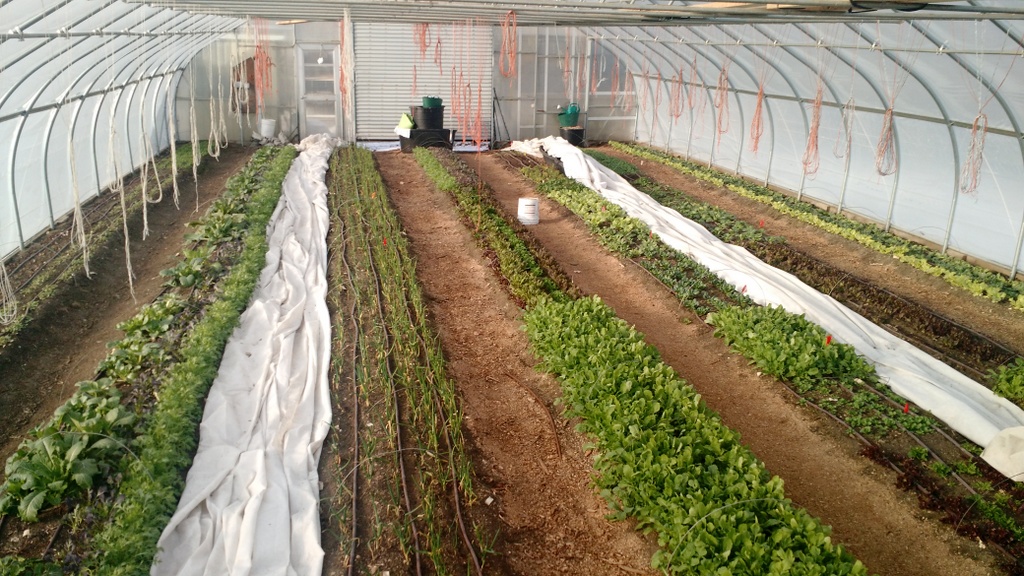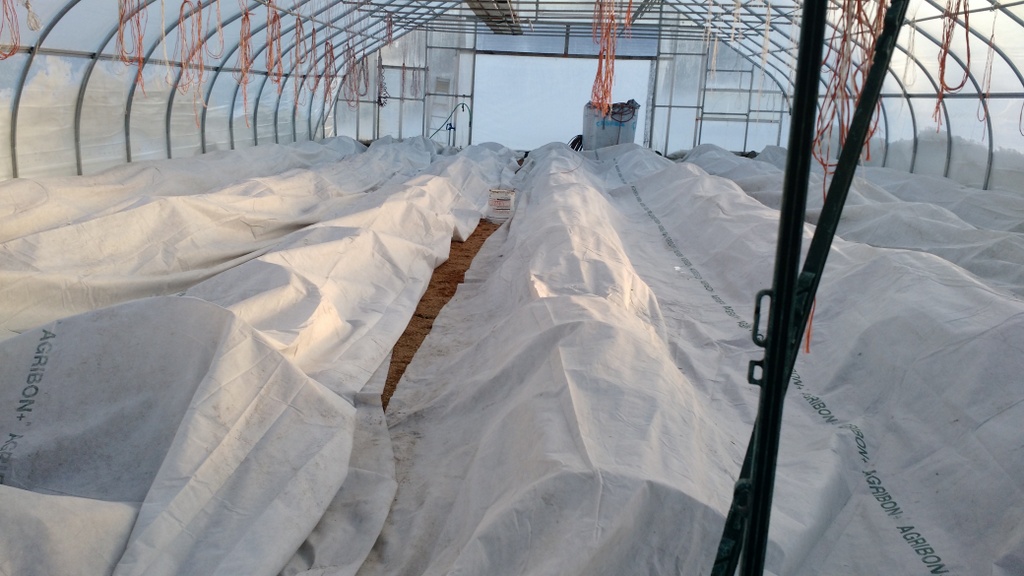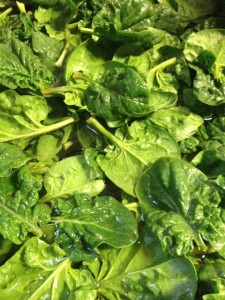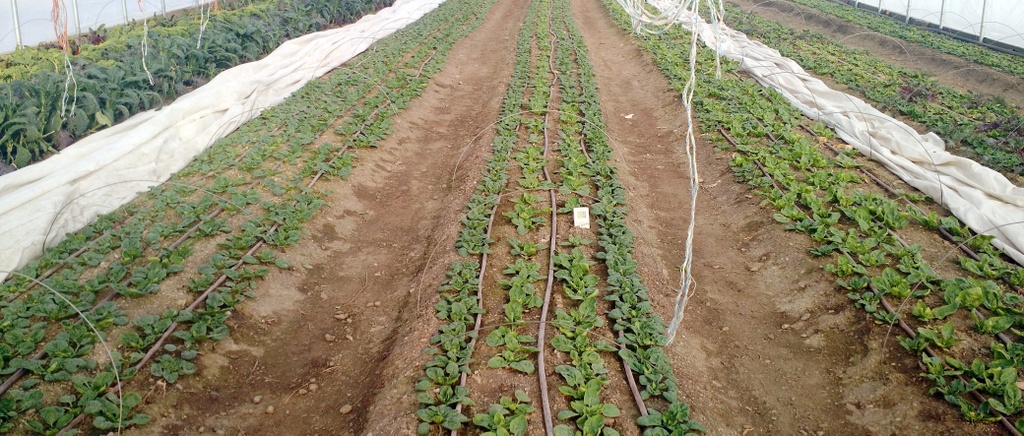Now, we are in Vermont and while it has felt like the end of Winter, there is no telling what March will bring.
But from a greens perspective, the day length is the governing force supported (and stymied) by the amount of sun and fluctuation in temperatures. But right now is one of those sweet spots — where the variety of greens we have carefully tended since last fall (covering, uncovering, watering when possible, etc.) are showing off.

Offering us all succulent nutrition they have packed densely into the leaves in their slow growing period, but not quite yet bolting towards Spring.

Sometime between writing cookbooks, being a tv star and giving birth to several new restaurants, Chef Edward Lee took time to pay homage to the distinctions of winter spinach in Rodale’s Organic Life. The thing we keep hearing from folks is how sweet it is. Sometimes folks even say it is “meaty”! Here’s how he summed things up…
“I truly appreciate the dark sturdy color of winter spinach. Absent through summer, spinach returns like a loyal friend, waiting in the crisp autumn air. Compared to baby spinach, with its fragile leaves, crinkly-leaved spinach harvested after frost is so hearty in taste, texture, and color that I think of it as a different vegetable altogether.
Winter spinach is as versatile as it is flavorful. I love it raw in salads; it is hearty enough to withstand big flavors like bacon, butternut squash, roasted beets, and even warm vinaigrettes. Try substituting it for lettuce in your next turkey sandwich. A quick sauté with garlic, butter, and nutmeg is a classic accompaniment to any winter roast.
But my favorite way to use winter spinach is to add it to stews or rice dishes at the last minute. Spinach is mostly water, which is why it wilts down so much when heated. Adding it to warm dishes last minute as a finishing touch preserves its unique texture and color.”

Enjoy this moment, a bit of a balance between deep Winter and Spring.